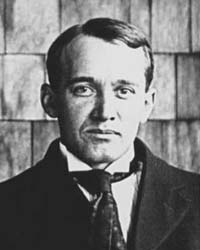In Their Own Words
Periods of 25 Variable Stars in the Small Magellanic Cloud

Image credit: Public Domain via Wikimedia Commons
Henrietta Leavitt
A remarkable relation between the brightness of the studied variables and the length of their periods has been noticed. There is a simple relation between the brightness of the variables and their periods: the brighter variables have the longer periods.
– Miss Henrietta Leavitt
Spectroscopic Observations of Spiral Nebulae

Image credit: AIP Emilio Segre Visual Archives
V. M. Slipher
The average radial velocity of spiral nebulae is +400 km/sec. Radial velocity is the speed along an observer's line of sight; positive radial velocity means an object is receding, while negative radial velocity means an object is approaching. As well may be inferred, the average velocity of the spirals is about 25 times the average stellar velocity.
– V.M. Slipher
The Relation of the System of Stars to the Spiral Nebulae
Endeavors have recently been made to present a comparative list of average radial or line-of-sight velocities of the several different kinds of objects in the sky, and to discuss the relation of the spiral nebulae to other objects. The average radial velocities of all except the spirals range in increasing magnitude from zero to fifty kilometers per second. But a considerable jump is noticed from the fifty kilometers to 400 kilometers for the average of the spirals. This suggests the question: Are the spirals dissociated from the star system? The average velocity is decisively positive, which means that they are receding not only from the observeranother.
– G. F. Paddock



